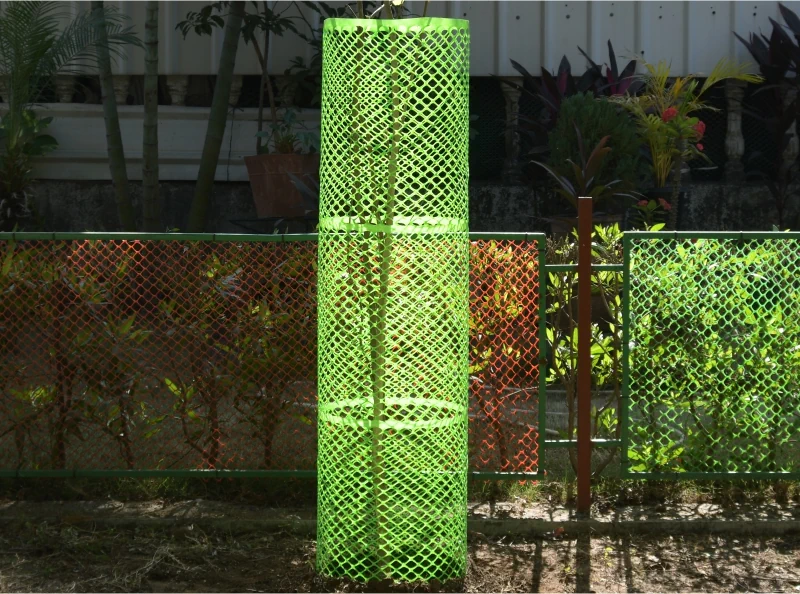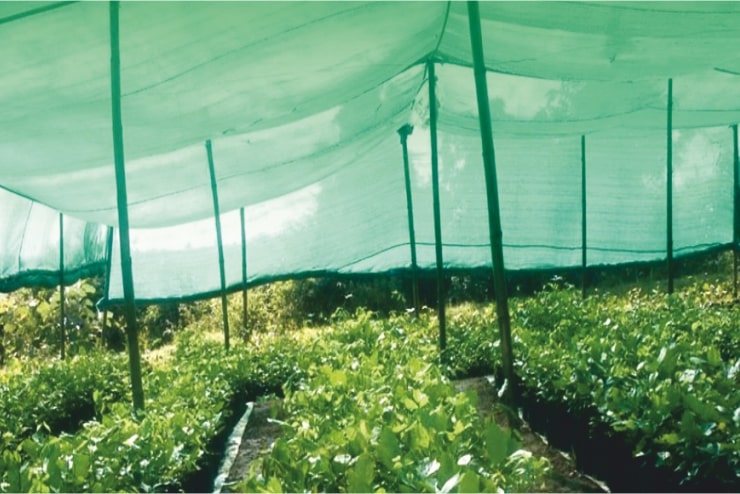|
Getting your Trinity Audio player ready...
|
Tree Shelters, also known as Sapling Protectors, Tree Mesh Guards, or Tree Guards, are indispensable tools in the field of plant protection. They are designed to safeguard young trees and shrubs from a number of threats, ensuring their healthy growth and longevity. In this comprehensive guide, we will delve into the importance of Tree Shelters, and the different types available such as Square and Hexagonal. We will also have a clear picture of their purposes, components, benefits, installation and maintenance, applications, and how to choose the right Tree Shelter for your specific needs.
Importance of Tree Shelters
Tree Shelters play a pivotal role in the realm of plant protection. They serve as the first line of defence for young trees and saplings against a multitude of threats. Without proper protection, these vulnerable plants can fall prey to various factors that hinder their growth and development. Tree Shelters are the unsung heroes of the plant world, ensuring that our green companions thrive in their early stages of life.
Types of Tree Shelters


Square Type Tree Guard: The Square Type Tree Guard is designed with a square-patterned structure, providing robust protection to young trees and shrubs. These Tree Guards are typically available in green colour or can be customised to suit specific preferences. They are designed for easy installation and do not require additional support structures. The square pattern ensures uniform coverage around the tree, effectively shielding it from external threats.
Hexagonal Type Tree Guard: The Hexagonal Type Tree Guard features a hexagonal-patterned design and is manufactured in tubular forms for enhanced durability and ease of installation. Unlike the Square Type, the Hexagonal Type typically requires support from bamboo stakes or other fabricated materials to maintain its shape and stability. The Hexagonal Type Tree Guard ensures efficient plant protection and promotes healthy growth in various planting environments.
Purpose of Tree Shelters
Protecting Young Plants:
The primary purpose of Tree Shelters is to protect young plants during their vulnerable early stages of growth. Without protection, these saplings are at risk of being trampled, grazed upon by wildlife, or damaged by environmental factors.
Safeguarding Tree Trunks:
Tree Shelters play a critical role in preserving the integrity of a tree’s trunk. They can effectively prevent mechanical damage, such as injuries caused by lawnmowers, trimmers, or other equipment. By maintaining a healthy trunk, Tree Shelters promote overall tree stability and longevity.
Ensuring Sapling Protection:
In forestry and reforestation projects, sapling protection is paramount. Tree Shelters create a controlled environment that accelerates growth and ensures the survival of saplings, even in harsh conditions. This is particularly important for re-establishing native forests and combating deforestation.
Features of Using Tree Shelters

Environment-friendly:
Indonet's Tree Shelters are crafted with eco-consciousness in mind, ensuring minimal environmental impact throughout their lifecycle.

UV Stabilised:
The Tree Shelters are crafted from durable materials designed to withstand harsh weather conditions. With UV stabilisation, these shelters maintain their strength and resilience, creating a stable shield for the optimal growth of trees.

Easy to Install:
Tree Shelters are designed with user convenience in mind, often featuring simple assembly processes that require minimal tools and expertise. This ease of installation ensures that even individuals with limited experience can effectively protect their plants without hassle.

Reusable and Recyclable:
One of the key benefits of Tree Shelters is their reusability, allowing them to be used for multiple planting seasons or on different plants as needed.

Non-Corrosive:
Tree Shelters are typically constructed from non-corrosive materials, which resist rust and degradation even in harsh outdoor conditions. This non-corrosive nature ensures that the shelters remain effective at protecting plants throughout their lifespan.

Cost-effective:
Made from durable materials, theseTree Shelters can withstand environmental elements and maintain their structural integrity over time. This nature further enhances their cost-effectiveness by providing long-term protection for multiple plants.
Applications of Tree Shelters

Roads and Highways: Along bustling thoroughfares, Tree Shelters provide essential protection for roadside plantings, promoting green spaces in urban environments.
Forest Department: In vast forests and wooded areas, Tree Shelters play a vital role in reforestation efforts, safeguarding young saplings from browsing animals and adverse weather conditions. These projects are vital for restoring ecosystems and battling deforestation.
Municipality: Municipalities harness the power of Tree Shelters to beautify public spaces, such as parks and gardens, while ensuring the healthy growth of newly planted trees and shrubs. They ensure the survival and rapid growth of young trees, even in challenging environments.
Nagarpalika and Panchayat: Local governing bodies leverage Tree Shelters to foster green initiatives within their communities, promoting environmental conservation and sustainable development.
NGOs: Non-governmental organisations, guard the cause of Tree Shelters in various environmental projects, working towards greener landscapes and biodiversity conservation.
CSR Activity: Through corporate social responsibility initiatives, Tree Shelters are deployed in community-based projects, aligning business interests with societal welfare and environmental stewardship.
Installation and Maintenance
Proper Installation Techniques:
Installing Tree Shelters correctly is crucial for their effectiveness. Follow these steps for proper installation:
- Clear the area around the tree of any debris or weeds.
- Ensure the Tree Shelter is the appropriate size for the tree.
- Place the guard around the tree, ensuring it is securely levelled to the ground.
- Secure the shelter in place using cable ties.
Regular Inspection and Maintenance
Regularly inspect Tree Shelters for damage, wear and tear. Replace or repair damaged guards promptly to ensure continued protection. Tree Shelters that become too tight as the tree grows should be adjusted to prevent girdling, which can harm the tree.
Choosing the Right Tree Guard
Choosing the right Tree Guard is crucial for the successful growth and protection of your trees. Consider factors such as the specific needs of your tree species, environmental conditions at the planting site, and your budgetary constraints. Consulting with experts can provide valuable insights into the best tree guard options for your particular situation. Additionally, weigh the costs against the longevity of the tree guards to ensure that you are making a wise investment in the long-term health and resilience of your trees.
For those seeking the best quality and reliability, Indonet Group stands as a beacon of excellence. With a commitment to innovation, sustainability, and customer satisfaction, Indonet Group remains the preferred choice for all your Tree Shelter needs. Choose Indonet Group and embark on a journey towards a greener tomorrow, one sapling at a time.

About Author
Indonet Group is a leading manufacturer and supplier of extruded plastic netting and geosynthetic solutions. With a strong commitment to quality and sustainability, Indonet serves industries ranging from agriculture to infrastructure, offering innovative and durable products. Backed by advanced technology and a customer-centric approach, Indonet Group continues to be a trusted name in the field, delivering excellence across global markets.
Follow the Expert


